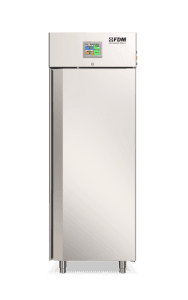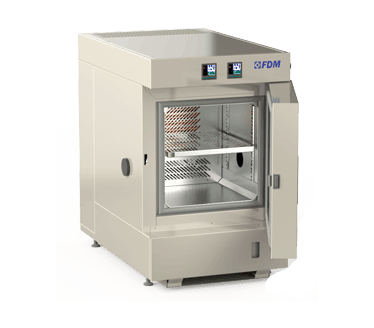
In the world of product and material testing, the use of technologically advanced instruments such as acrylic vacuum chambers and climatic chambers is crucial to ensure performance, safety and compliance with international standards.
However, choosing the right instrument for your purposes is not easy and this can make the difference in the results of critical tests. Today we talk about the differences between acrylic vacuum chambers and climatic chambers to guide you in choosing the ideal instrument for your needs.
What is an Acrylic Vacuum Chamber?
An acrylic vacuum chamber is a laboratory instrument designed to create a low-pressure environment by removing the air inside it through a vacuum pump. As the name suggests, these chambers are primarily constructed of transparent acrylic, a resistant and lightweight material that allows constant observation of the tests during their execution.
In theory, the operation of the acrylic vacuum chamber is simple: a pump progressively sucks air from inside the chamber, creating partial or complete vacuum conditions. This process allows you to simulate environments such as high altitude or space. Acrylic vacuum chambers are therefore used to test the resistance of materials and products to low pressures, to degas resins or fluids, or to test the tightness of packages and devices in air transport conditions.
Perform
Climate Stress
Discover the new series of Climate Chambers for controlled climate testing
Who Needs an Acrylic Vacuum Chamber?
Thanks to their wide range of applications, acrylic vacuum chambers are used in various industrial sectors. In the aerospace industry, for example, they are used to reproduce the extreme conditions of space and test satellite or vehicle components.
In the electronics industry, on the other hand, acrylic vacuum chambers test the resistance of low-pressure devices, while in the food industry they help ensure the robustness of vacuum packaging. The acrylic vacuum chamber is also widely used in the chemical and pharmaceutical sectors, especially to degas materials or test the stability of compounds in extreme conditions.
In many cases, tests carried out in these chambers must comply with international standards such as MIL-STD-810G method 500.5, which defines the procedures for low-pressure tests.
Acrylic Vacuum Chamber vs. Climatic Chamber
The acrylic vacuum chamber is a tool perfectly designed to achieve its purposes. However, it is not the only tool capable of achieving them.
Climatic chambers, in fact, are equally capable of simulating low pressure conditions, in a controlled environment isolated from the outside.
However, unlike acrylic vacuum chambers, climatic chambers offer a series of additional features that allow for greater versatility and their use in dozens and dozens of different types of tests on products and materials.
In each climatic chamber, in fact, it is possible to precisely adjust and monitor the temperature and relative humidity parameters, as well as program regular variations that allow for the thermal cycles of the so-called dynamic tests.
For this reason, almost all industries make extensive use of climatic chambers that represent a more expensive investment than an acrylic vacuum chamber but also enormously more versatile.
You cannot find the ideal chamber for your test?
Create your own environment, according to any test requirement
The FDM Climatic Chamber
For over 70 years, FDM Environment Makers has been a leading company in the field of climatic tests.
We design and produce professional climatic chambers for all needs, including tests usually carried out in an acrylic vacuum chamber.
In addition, our technicians are always ready to listen to the customer to design together the chamber that best meets his needs.
Please contact us.
Would you like to receive a quote or do you have questions about the product?
Contact us to receive more information about this Product.



